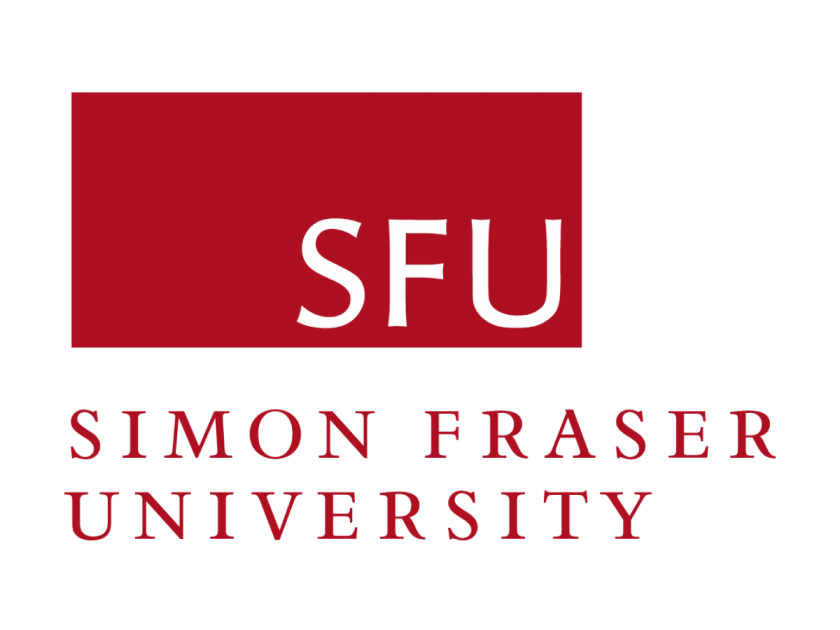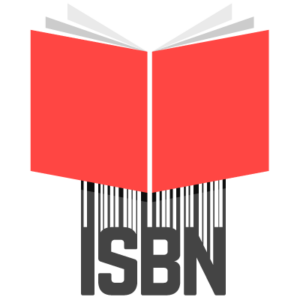The impact of digital technology on content and language integrated learning in higher education: a systematic review of literature
DOI:
https://doi.org/10.54855/ictep.23311Keywords:
CLIL, ICT, digital technology, higher education, content and language integrated learningAbstract
With internationalization becoming an increasing trend in higher education, many universities worldwide have been implementing content and language-integrated learning (CLIL) as an innovative approach to teaching and learning English that helps students compete internationally. Alongside this trend, the advance of digital technologies has offered beneficial use in integrating language and content knowledge. Following the conceptual framework of Hallingda (2013), this systematic review has explored the impact of digital technology use in English education related to the CLIL approach by synthesizing studies on various forms of technologies in supporting different aspects of CLIL. Findings revealed a positive interrelation of digital impact on language use and skills and social collaboration, interaction, and motivation. However, a lack of evidence was found regarding the correlation between using digital technologies and enhancing content knowledge in CLIL. This recommended further research delving into how digital use would assist both language and content teaching and learning so that students at higher educational institutes could effectively access the global world.
References
Adipat, S. (2021). Developing technological pedagogical content knowledge (TPACK) through technology-enhanced content and language-integrated learning (T-CLIL) Instruction. Education and Information Technologies, 26(5), 6461-6477.
Ángel, S. A. (2015). Real and virtual bioreactor laboratory sessions by STSE–CLIL WebQuest. Education for Chemical Engineers, 13, 1-8.
Baranova, T., Khalyapina, L., Vdovina, E., & Yakhyaeva, C. (2020, September). Soft CLIL v. 2.0: Integrating a mobile app and professional content into the language training. In IOP Conference Series: Materials Science and Engineering (Vol. 940, No. 1, p. 012140). IOP Publishing.
Choi, H., Kim, J., Bang, K. S., Park, Y. H., Lee, N. J., & Kim, C. (2015). Applying the flipped learning model to an English-medium nursing course. Journal of Korean Academy of Nursing, 45(6), 939-948. https://doi.org/10.4040/jkan.2015.45.6.939
Chuang, Y.-T. (2017). MEMIS: A mobile-supported English-medium instruction system. Telematics and Informatics, 34(2), 640-656. https://doi.org/10.1016/j.tele.2016.10.007
Coyle, D., Hood, P., & Marsh, D. (2010). Content and language integrated learning. United Kingdom: Cambrige University Press.
Dafouz, E., & Smit, U. (2016). Towards a dynamic conceptual framework for English-medium education in multilingual university settings. Applied Linguistics, 37(3), 397–415. https://doi.org/10.1093/applin/amu034
Daoud, R., Starkey, L., Eppel, E., Vo, T. D., & Sylvester, A. (2020). The educational value of internet use in the home for school children: A systematic review of literature. Journal of Research on Technology in Education, 53(4), 353-374.
Firmayanto, R., Heliawati, L., & Rubini, B. (2021, June). The Effectiveness of Content and Language Integrated Learning (CLIL) Online Assisted by Virtual Laboratory on Students' Science Process Skills in Acid-Base Materials. In Journal of Physics: Conference Series (Vol. 1918, No. 5, p. 052061). IOP Publishing.
Galitsyna, I. V., & Yesenina, N. Y. (2020, May). CLIL Technology in ICT-Based English Training of Engineering Students. In 2020 ELEKTRO (pp. 1-5). IEEE.
Garcia-Esteban, S., Villarreal, I., & Bueno-Alastuey, M. C. (2021). The effect of telecollaboration in the development of the learning to learn competence in CLIL teacher training. Interactive Learning Environments, 29(6), 973-986.
Gimeno, A., Seiz, R., Siqueira, J. M. d., & Martínez, A. (2010). Content and language integrated learning in higher technical education using the inGenio online multimedia authoring tool. Procedia - Social and Behavioral Sciences, 2(2), 3170-3174. https://doi.org/10.1016/j.sbspro.2010.03.484
Hallinger, P. (2013). A conceptual framework for systematic reviews of research in educational leadership and management. Journal of Educational Administration, 51(2), 126-149. doi:10.1108/09578231311304670
Kalolo, J. (2019). Digital revolution and its impact on education systems in developing countries. Education and Information Technologies, 24(1), 345-358. https://doi.org/10.1007/s10639-018-9778-3
Karjanto, N., & Simon, L. (2018). English-medium instruction calculus: Is flipping helpful? arXiv.org. https://arxiv.org/pdf/1611.08377.pdf
Kitchenham, B. (2004). Procedures for performing systematic reviews. Keele, UK, Keele University, 33(2004), 1-26.
Lavrysh, Y., Saienko, N., & Kyrychok, A. (2021). Issues of Educational Technologies and Authenticity Synergy in a Content and Language Integrated Learning Course at Technical University. International Journal of Emerging Technologies in Learning (IJET), 16(14), 113-128.
Meinecke, M. A. (2020). Identifying student preferences in online content and language integrated learning courses. DIGILEC: revista internacional de lenguas y culturas, 6, 89-104.
Ng, W. (2015). New Digital Technology in Education Conceptualizing Professional Learning for Educators (1st ed.). Springer International Publishing. https://doi.org/10.1007/978-3-319-05822-1
Nguyen, T. T. H. (2021). Implementing Digital Techniques to Stimulate EFL Students' Engagement: A Case Study in Vietnam. International Journal of TESOL & Education, 1(3), 105–129. Retrieved from https://i-jte.org/index.php/journal/article/view/81
Nguyen, T. N. T. (2022). A Review of Studies on EFL Teachers' and Students' Perceptions of Tranglanguaging as a Pedagogical Approach. International Journal of TESOL & Education, 2(3), 324–331. https://doi.org/10.54855/ijte.222322
Paliwoda-Pękosz, G., & Stal, J. (2015). ICT in supporting content and language integrated learning: Experience from Poland. Information Technology for Development: ICT in Transition Economies, 21(3), 403-425. https://doi.org/10.1080/02681102.2014.1003521
Price, L., & Kirkwood, A. (2014). Using technology for teaching and learning in higher education: A critical review of the role of evidence in informing practice. Higher Education Research & Development, 33(3), 549-564. https://doi.org/10.1080/07294360.2013.841643
Puspitasari, E. (2020). Mind Mapping in CLIL: How It Facilitates Students' Reading Comprehension. Journal of English Education and Teaching, 4(2), 154-169.
Querol-Julián, M., & Camiciottoli, B. C. (2019). The impact of online technologies and English medium instruction on university lectures in international learning contexts: A systematic review. ESP Today, 7(1), 2-23. https://doi.org/10.18485/esptoday.2019.7.1.1
Salekhova, L. L., Grigorieva, K. S., & Zinnurov, T. A. (2019, October). Using LMS moodle in teaching CLIL: A case study. In 2019 12th International Conference on Developments in eSystems Engineering (DeSE) (pp. 393-395). IEEE.
Saltan, F., Türkyılmaz, T., Karaçaltı, C., & Bilir, K. (2018). Use of current educational technology in science education: A scoping review. Çukurova University. Faculty of Education Journal, 47(1), 308-336. https://doi.org/10.14812/cuefd.304015
Selwyn, N. (2010). Looking beyond learning: notes towards the critical study of educational technology. Journal of Computer-assisted learning, 26(1), 65-73. https://doi.org/10.1111/j.1365-2729.2009.00338.x
Smale, M. A. (2017). Digital technology as affordance and barrier in higher education (1st ed.). Springer International Publishing. https://doi.org/10.1007/978-3-319-48908-7
Smit, U., & Dafouz, E. (2012). Integrating content and language in higher education: An introduction to English-medium policies, conceptual issues and research practices across Europe. Aila Review, 25(1), 1-12.
Torraco, R. J. (2016). Writing Integrative Literature Reviews: Using the Past and Present to Explore the Future. Human Resource Development Review, 15(4), 404-428. doi:10.1177/1534484316671606
Zaripova, R., Salekhova, L., Grigoriev, S., & Grigorieva, K. (2019). Increasing academic motivation through Integrated Language and Content Learning (CLIL) and Information and Communication Technologies mediated by the constructivist approach. Dilemas Contemporáneos: Educación, Política y Valores, 6 (1), 1-12.
Zhyrun, I. (2016). Culture through comparison: Creating audio-visual listening materials for a CLIL course. Latin American Journal of Content & Language Integrated Learning, 9(2). https://doi.org/10.5294/7091
Villarreal, I., & Bueno-Alastuey, M. C. (2022). The Forging Links project: Knowledge transference using pre-service teachers' CLIL units with ICT integration. Porta Linguarum Revista Interuniversitaria de Didáctica de las Lenguas Extranjeras, 63-79.
Vo, T. D., Gleeson, M., & Starkey, L. (2022). The glocalisation of English-medium instruction examined through of the ROAD-MAPPING framework: A case study of teachers and students in a Vietnamese university. System, 108, 102856. https://doi.org/10.1016/j.system.2022.102856.
Zhao, K., Zhou, J., & Zou, B. (2022). Developing subject knowledge co-construction and specific language use in a technology-enhanced CLIL programme: effectiveness and productive patterns. International Journal of Bilingual Education and Bilingualism, 25(6), 2172-2185
Downloads
Published
How to Cite
Issue
Section
License
Copyright (c) 2023 Tho Vo, Dao Truong, Phong Nguyen

This work is licensed under a Creative Commons Attribution 4.0 International License.
Authors retain copyright and grant the picte the right of first publication with the work simultaneously licensed under a Creative Commons Attribution 4.0 International License that allows others to share the work with an acknowledgment of the work's authorship and initial publication in this journal.
Authors are able to enter into separate, additional contractual arrangements for the non-exclusive distribution of the proceedings' published version of the work (e.g., post it to an institutional repository, in a journal, or publish it in a book), with an acknowledgment of its initial publication in this proceedings.
Authors are permitted and encouraged to post their work online (e.g., in institutional repositories or on their website) prior to and during the submission process.










